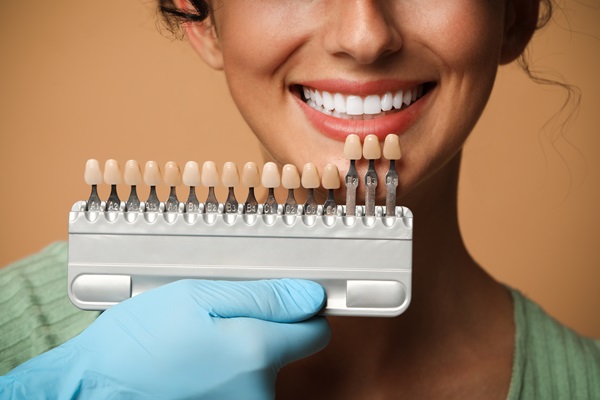The Process of Getting Dental Veneers: What to Expect

Dental veneers restore one’s smile with custom-fit shells. The dentist will place them on the front surface of the teeth to cover any damage and discoloration. Understanding the process of getting these restorations can help you prepare for your next appointment. Here are the details on what to expect when getting dental veneers.
The consultation
Consulting a general dentist about dental veneers will take one dental visit. The dentist will see if the patient is a good candidate for the procedure. An individual with dental damage and stains can get these custom shells. Irregularly shaped teeth can also get dental veneers.
Preparing the teeth
Getting veneers will take about two dental visits. The dentist will prepare the teeth first. This preparation will involve shaving off the thin top layer of the enamel. Doing so will prevent the teeth from looking bulky after attaching the shells. Most patients do not need local anesthesia for this step, but the dentist may administer it to ensure the patient’s comfort.
The dentist will take dental impressions. The lab will need them to create the custom-fit dental veneers. Temporary veneers will protect the prepared teeth while waiting for the permanent ones. The patient will come back after one to two weeks when the shells are ready.
Applying the veneers
This step will happen during the second visit. The dentist will see to it that the shells match the natural teeth. Slight adjustments may be necessary. Cleaning and polishing the teeth will follow.
The dentist will attach the dental veneers once the fit is correct. Removing the excess cement will make sure that the shells blend well with the teeth. Checking the patient’s bite will ensure that the veneer will not affect the patient’s dental functions. The patient will then go home with a brand-new, brighter smile.
Aftercare
Most patients feel some discomfort after getting dental veneers. But dental functions will be normal after the treatment. Individuals with sensitive teeth must eat foods that are easy to chew. Maintain this diet until the patient adjusts.
Flossing and brushing are still necessary even if the dental veneers are more stain-resistant than the enamel. Refrain from using the treated teeth for anything aside from eating. Avoid hard and sticky foods to prevent the shells from cracking, chipping, or dislodging. Proper care and maintenance can result in lasting restorations.
Signs a person needs dental veneers
A visit to the dentist will determine if the individual needs these restorations. A physical dental check will lead to some possible treatment suggestions. The easiest way to correct any aesthetic issues is by getting dental veneers. Below are the signs an individual needs these custom-shells:
- Cracked or chipped teeth will need immediate treatment. The dentist will likely recommend dental veneers for a quick and affordable solution. These restorations can last for a long time with proper care and maintenance.
- Dental gaps and misaligned teeth can also get veneers. The custom-fit shells can fill the gaps and cover crooked teeth.
- Discolored or stained teeth result from years of consuming colored foods and drinks. The dentist will recommend dental veneers if the teeth do not improve with professional teeth whitening treatments.
Dental veneers can restore and improve your smile for many years
Cosmetic dental issues may arise later in life. Problems like discoloration or damage may lower your self-esteem. Dental veneers can improve your appearance and oral functions. Working with your general dentist can make your new smile last many years.
Request an appointment here: https://matthewparilladmd.com or call Matthew Parilla DMD at (831) 207-4692 for an appointment in our Hollister office.
Check out what others are saying about our dental services on Yelp: Dental Veneers and Dental Laminates in Hollister, CA.
Related Posts
Dental restorations can help you maintain your oral health and prevent further decay. A dental filling is one of the most common restorative procedures used to treat mild to moderate cavities and other dental damage. This type of restoration restores the function and appearance of a damaged or decayed tooth. Let us walk you through…
A dental bridge is a popular solution to replace one or more missing teeth, restoring the function and appearance of your smile. However, you may be wondering how long a dental bridge will last. While several factors will influence the longevity of the dental bridge, understanding the expected lifespan and necessary care can help you…
Helping your child develop good oral hygiene habits starts at home. But which products should you use to keep their teeth bright and healthy? Our kid-friendly dentist can recommend the best products to support your child's oral healthcare between their routine checkups and cleanings.A soft-bristled toothbrush designed for children is one of the most important…
Sleep apnea is a chronic disorder in which an individual briefly stops breathing while asleep. These breathing interruptions can cause the person to wake up, gasp for air or snore. Left untreated, this condition can lead to sleep deprivation and negatively affect overall health. Many people suffer from this sleep issue without knowing it. It is…
